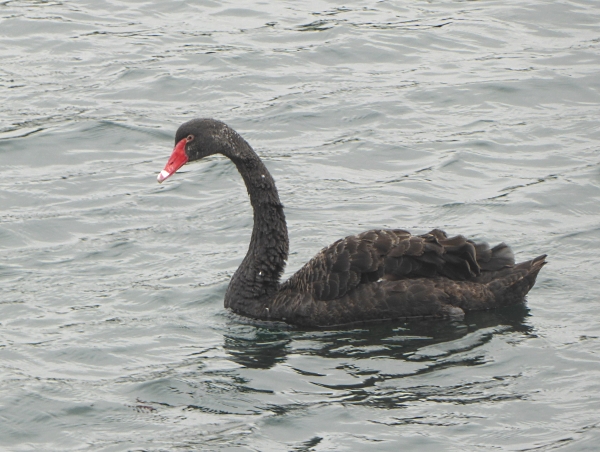It was raining hard when we met in Queen Square. What a change after the record-breaking heatwave of last week! While we waited for the bus we looked again at the unidentified tree next to the New Look shop. It is in flower, with the seeds forming like little gooseberries. New leaves are growing out of the tips of the flower shoots. What an oddity it is. It can’t be either Honey Locust (Gleditsia) or a Pagoda Tree (Sophora), our previous guesses, because they both have seeds in pods. It’s really got us stumped.

In Birkdale, we walked in the rain down Weld Road and turned onto Rotten Row. Its claim to fame is one of the longest herbaceous borders in the country, at 746 meters (nearly half a mile.) It was once an attractive promenade and a popular tourist attraction, but it was allowed to deteriorate and become overwhelmed with weeds and rubbish. In 2011 the Friends of Rotten Row began the restoration, with the help of the council and the Heritage Lottery Fund. A dedicated band of volunteers now keep it in its glory and continue to win many awards.

We strolled slowly along, admiring the plants. The little red and pink spikes are of the unusual Primula viallii. We also liked the Globe Thistle Echinops bannaticus, the Pheasant Bush Leycesteria formosa and the huge thistle-like Cardoon Cynara cardunculus.





The north end is the gateway into Victoria Park, where preparations for the Southport Flower Show were just starting. We dripped our way into Morrison’s for the loos, then into the shelters in King’s Gardens for a late lunch. The bowling green was waterlogged, and it was full of Carrion Crows, Herring Gulls and Black-headed Gulls, perhaps hoping that worms would come up. The rain went off a bit and we strolled around the south end of the Marine Lake. There was a Moorhen, Mallards, Greylag Geese, Canada Geese and about 40 Mute Swans. Four of the swans preening on the edge had blue Darvic rings (so belonging to the North West Swan Study, not the green rings of Cheshire.) They were 4CHS, 4CHP, 4CUA, VD4. (Added later. Steve Christmas from the NW Swan Study tells me that 4CHS and 4CHP were ringed as male cygnets on 21 Dec 2016 at Southport. 4CUA was ringed as a male cygnet 4 Nov 2017 at Sale Water Park, Manchester and VD4 was ringed as a male cygnet 8 Oct 2016 at Greenbank Park, Liverpool. )

We thought we spotted a man and his wife picking up an oddly unresisting Greylag Goose from the path under the bridge. They said they had rescued it as a tiny gosling, hand-reared it, and now three months later were trying to let it go, but it had imprinted on them and just kept following them home. They plan to take it to Martin Mere.
Then there was a surprise, a Black Swan Cygnus attratus. They are native to Australia, so it hadn’t flown here all that way – it must be an escapee from some collection somewhere. John said it had been around for a while, and the obvious suspect for its source is the WWT reserve at Martin Mere, which keeps all kinds of exotic wildfowl. However, they deny it’s one of theirs.

The rain had eased a bit, but we sat in the shelter around the back of Southport Theatre. In the shrubbery were several Ladybirds on the Cotton Lavender plant, Santolina. They must have liked it there despite the rather antiseptic smell. One was definitely the common 7-spot Ladybird, but the other two were very tiny, just 3mm, and the spots weren’t as neat. I think they were 11-spot Ladybirds, Coccinella 11-punctata, whose spots are sometimes fused (looking like 7), and they are “widespread on various herbaceous plants”.


Then it started to rain heavily so we gave up and headed back to the station, past all the ice-cream and rock shops which must have done a wonderful trade earlier in the week.

Public transport details: Bus 47 from Queen Square at 10.15, arriving Lulworth Road / Weld Road (Birkdale) at 11.18. Returned from Southport Station on the 2.28 train, arriving Liverpool sometime after 3.
